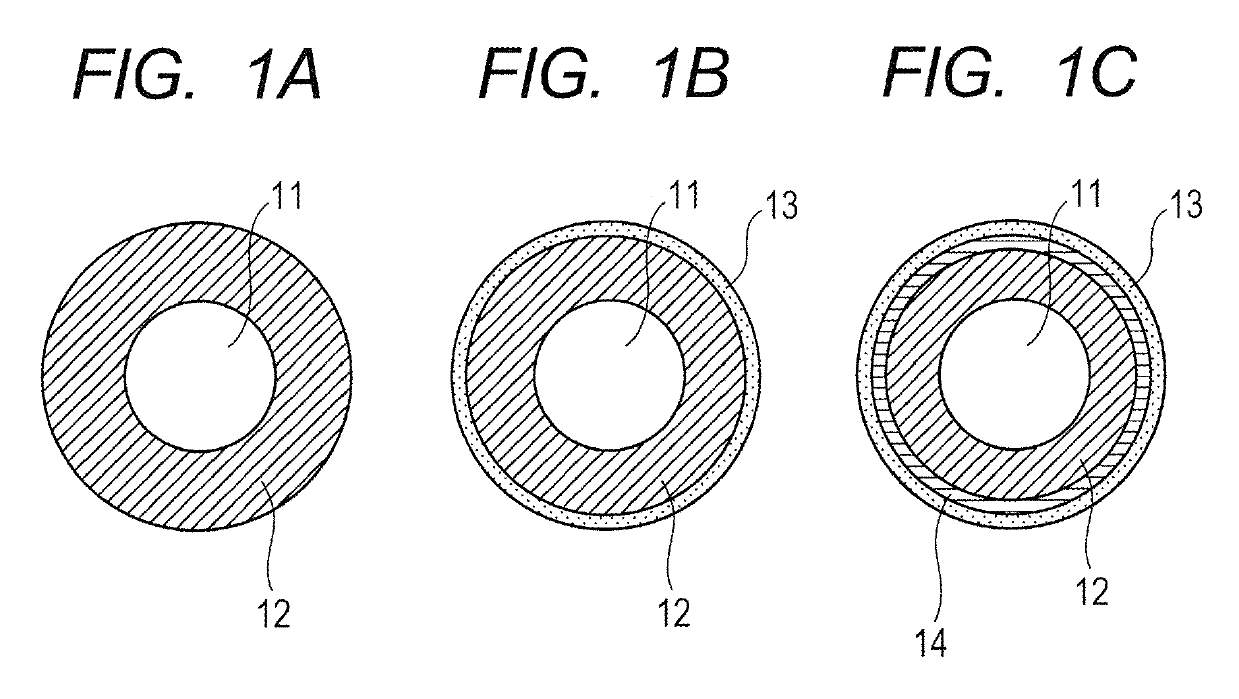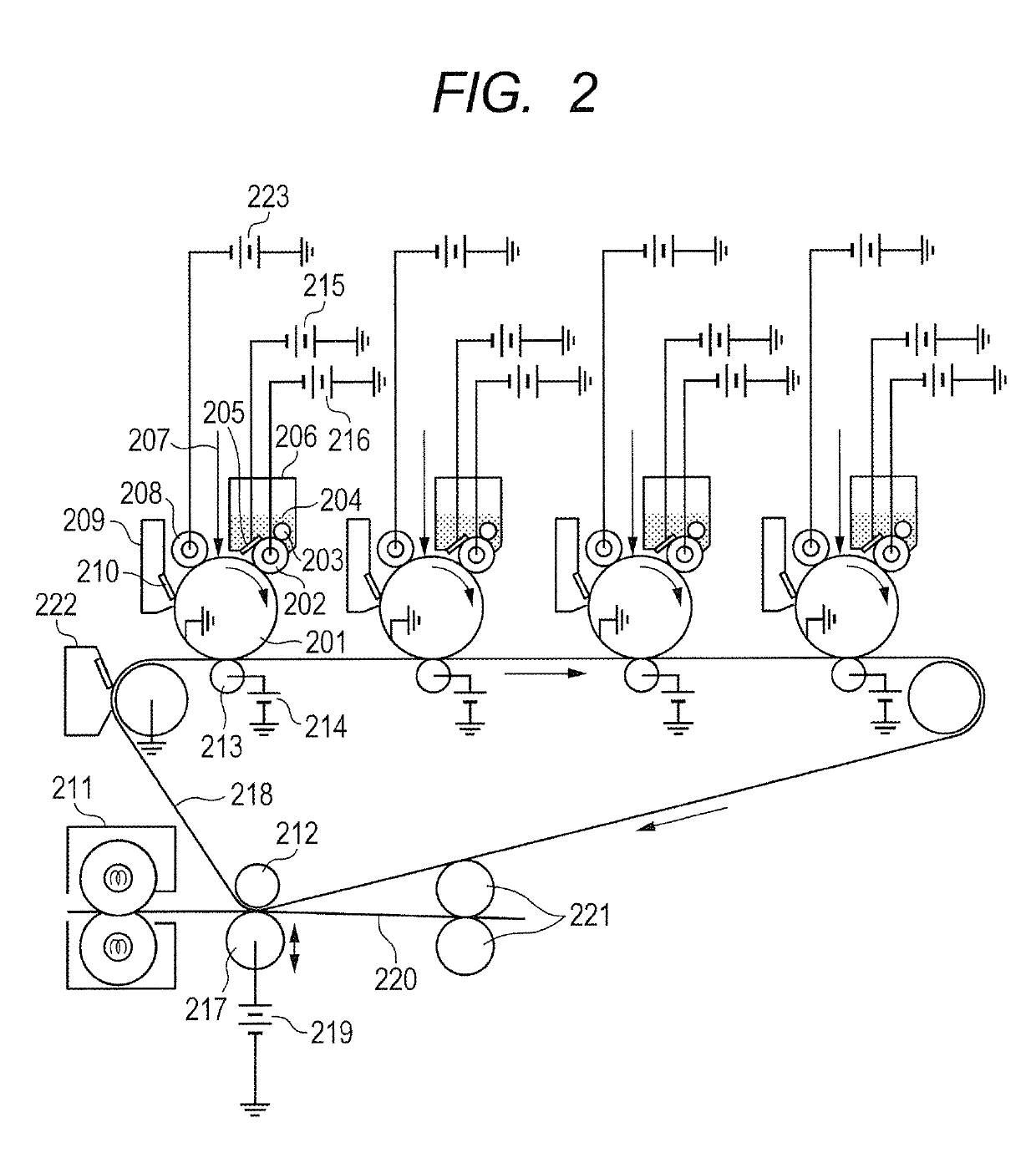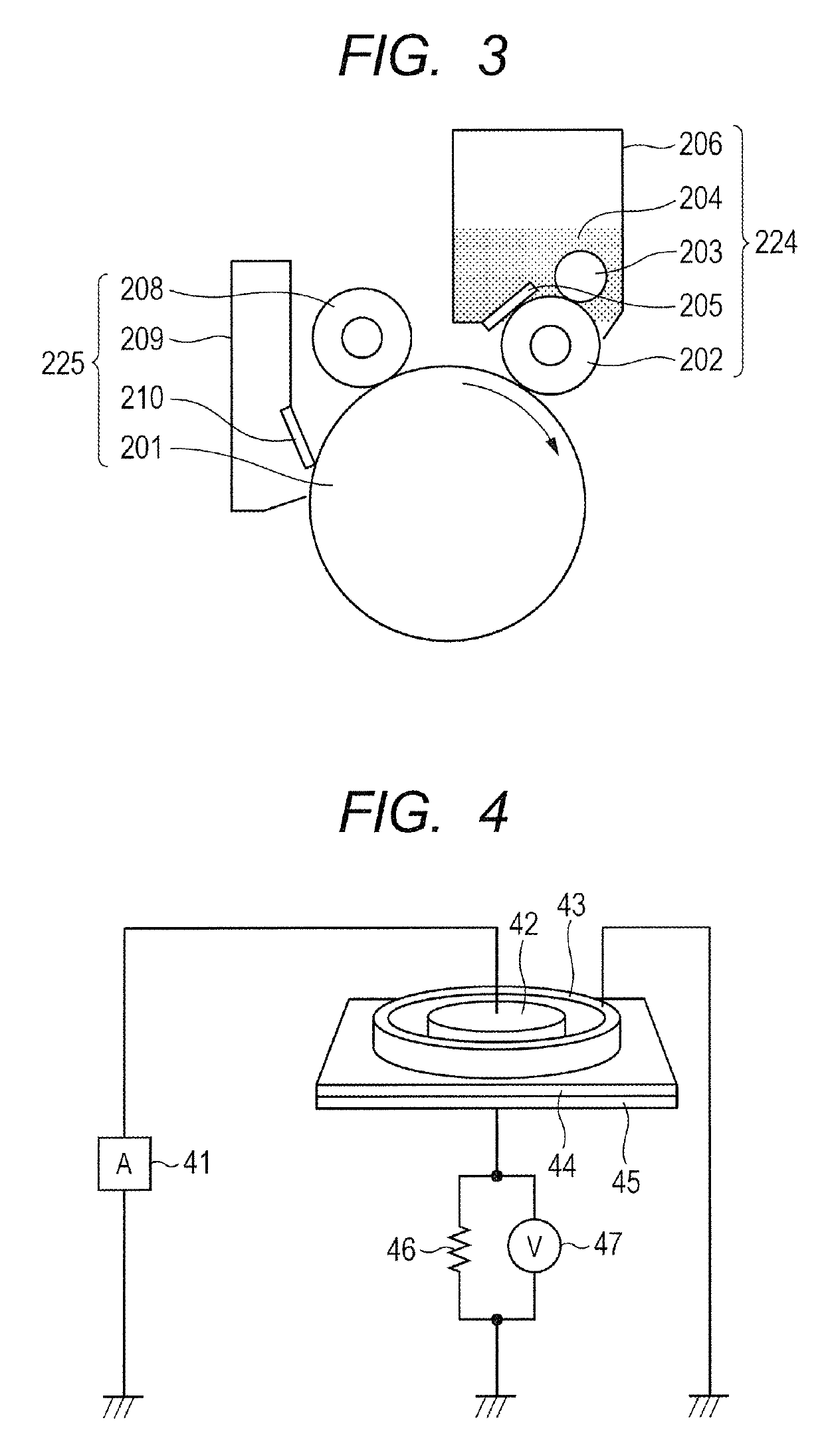Electroconductive member for electrophotography and quaternary ammonium salt
a technology of quaternary ammonium salt and electrophotography, which is applied in the direction of electrographic process, corona discharge, instruments, etc., can solve the problems of reduced electroconductivity, difficult to achieve by electronic electroconductive agents, and sticky surface or fouling of the member to be brought into contact, etc., to suppress the effect of electrification and electroconductivity reduction, less occurrence of fouling, and less occurrence of image defects
- Summary
- Abstract
- Description
- Claims
- Application Information
AI Technical Summary
Benefits of technology
Problems solved by technology
Method used
Image
Examples
synthesis example 1
[0139]Synthesis of Tertiary Amine 1 as Raw Material
[0140]25 g (183 mmol) of p-xylylenediamine as an amine was dissolved in 75 ml of ethanol. Next, while the resultant was cooled in an ice bath, 87.1 g (1.514 mol) of 80% formic acid as a reducing agent and 65.6 g (807 mmol) of a 37% formaldehyde aqueous solution as a tertiarizing agent were added thereto in drops. After the addition in drops, the resultant was heated and refluxed while being stirred for 5 hours. The reaction solution was cooled to room temperature, and ethanol, and excessive formic acid and formaldehyde were distilled away under reduced pressure. 200 ml of a 10% sodium hydroxide aqueous solution was added to the obtained concentrated solution, and then the resultant was subjected to separation three times with 100 ml of ethyl acetate. Magnesium sulfate was added to the obtained organic layer, followed by stirring and then filtration. Ethyl acetate was distilled away under reduced pressure. A tertiary amine 1 as a raw...
synthesis examples 2 to 24
[0147]Tertiary amines as raw materials were hereinafter synthesized by using amines and tertiarizing agents shown in Table 1 in the same manner as described above, or commercially available ones were purchased. After that, the tertiary amines as raw materials and quaternizing agents were allowed to react with each other, to synthesize target quaternary ammonium salts 2 to 24. In the following formulae, Me represents CH3 and Et represents CH2CH3. It should be noted that, in Synthesis Example without any description of a tertiarizing agent in Table 1, a tertiary amine commercially available as an amine was used.
[0148]
[0149]Chemical shifts (ppm) using, as a reference, the peak of TMS in DMSO obtained from a 1H-NMR spectrum are shown below.
[0150]1H-NMR (400 MHz, DMSO, 22° C.): δ=4.12 (s, 2H), 3.87 (s, 2H), 3.48 (m, 4H), 3.30 (s, 12H, CH3), 3.17 (m, 2H), 2.95 (m, 2H), 2.71 (m, 2H), 2.08-0.98 (8H)
[0151]
[0152]Chemical shifts (ppm) using, as a reference, the peak of TMS in DMSO obtained fro...
example 1
[0168]
Epichlorohydrin-ethylene oxide-allyl glycidyl100parts by massether terpolymer (GECO) (trade name:EPICHLOMER CG-102, manufactured by DaisoCo., Ltd.)Zinc oxide (Zinc Oxide Type II, manufactured5parts by massby Seido Chemical Industry Co., Ltd.)Calcium carbonate (trade name: Silver-W,35parts by massmanufactured by Shiraishi Calcium Kaisha, Ltd.)Carbon black (trade name: SEAST SO,0.5part by massmanufactured by Tokai Carbon Co., Ltd.)Stearic acid2parts by massAdipic acid ester (trade name:POLYCIZER W305ELS, manufactured by10parts by massDainippon Ink And Chemicals, Inc.)Quaternary ammonium salt 1 as an ionic2parts by masselectroconductive agent
[0169]The materials whose kinds and amounts were described above were kneaded with a kneader, to prepare an A kneaded rubber composition. Next, 0.5 part by mass of sulfur as a vulcanizing agent and 2 parts by mass of dipentamethylenethiuram tetrasulfide (trade name: Nocceler TRA, manufactured by Ouchi Shinko Chemical Industrial Co., Ltd.) as ...
PUM
| Property | Measurement | Unit |
|---|---|---|
| thickness | aaaaa | aaaaa |
| temperature | aaaaa | aaaaa |
| diameter | aaaaa | aaaaa |
Abstract
Description
Claims
Application Information
 Login to View More
Login to View More - R&D
- Intellectual Property
- Life Sciences
- Materials
- Tech Scout
- Unparalleled Data Quality
- Higher Quality Content
- 60% Fewer Hallucinations
Browse by: Latest US Patents, China's latest patents, Technical Efficacy Thesaurus, Application Domain, Technology Topic, Popular Technical Reports.
© 2025 PatSnap. All rights reserved.Legal|Privacy policy|Modern Slavery Act Transparency Statement|Sitemap|About US| Contact US: help@patsnap.com



